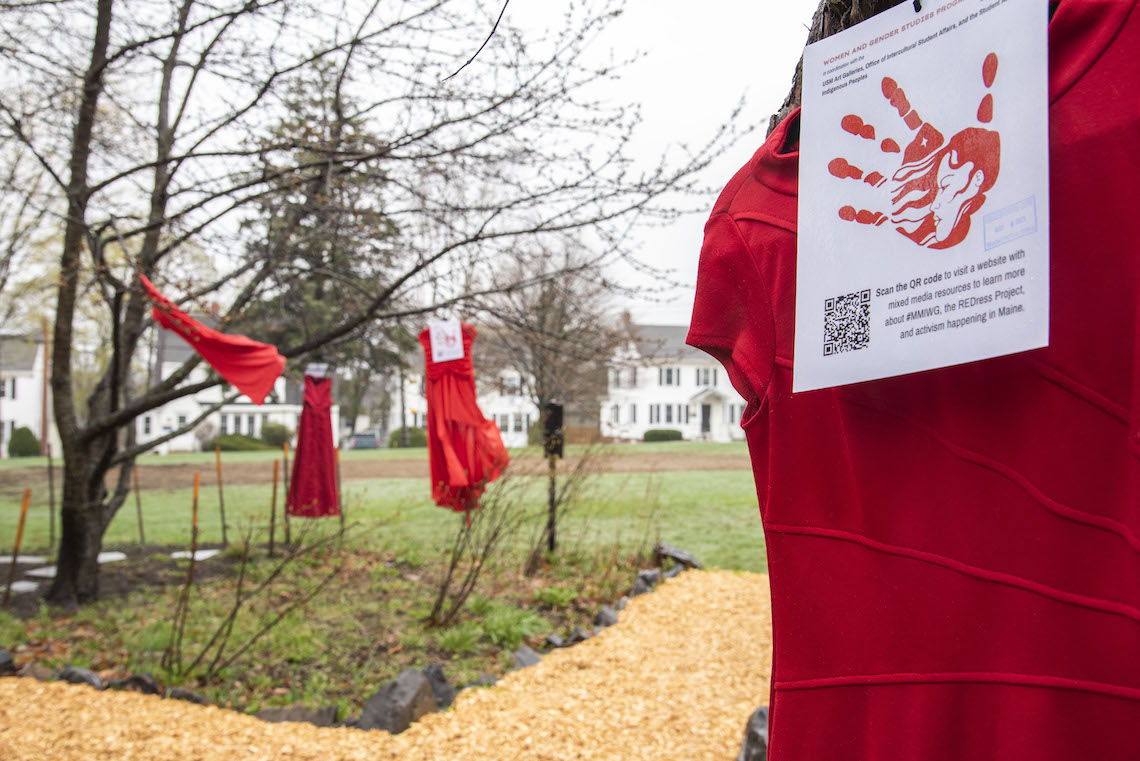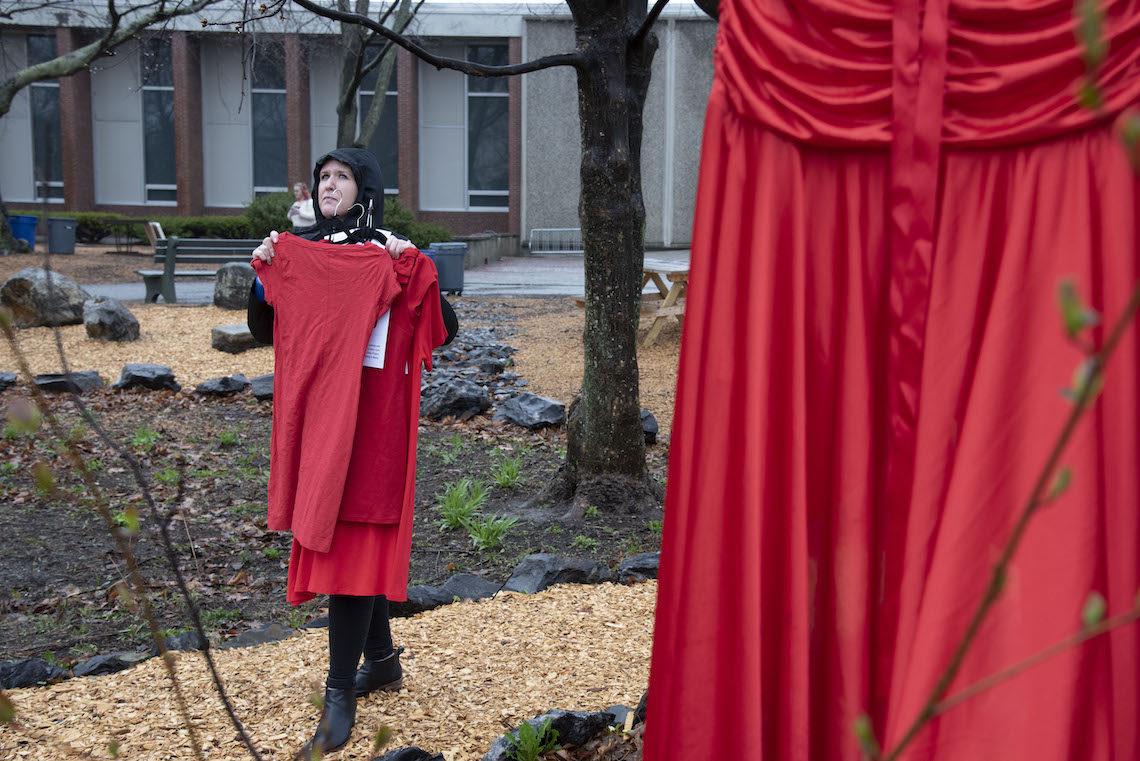
Soon-to-be graduates at the University of Southern Maine had two weeks before Commencement to pick up their caps and gowns. But as they went about that chore, a different kind of gown caught their attention.
Heads turned at the sight of several bright red dresses hanging from the trees outside of Luther Bonney Hall on the Portland Campus. Perhaps they’d once been proudly worn to a wedding or school dance, only to end up unclaimed and exposed to the elements. The uneasy feeling they inspired was intentional.
“When I look at the red dresses on campus, I can see all my sisters who have gone missing and murdered which is heavy on my heart,” said Liliana Sapiel.
A first-year Political Science major, Sapiel helped organize the display as a member of the Student Alliance of Indigenous People in a joint effort with the Women and Gender Studies Program (WGS). They wanted to bring attention to the dangers faced by Indigenous women and girls.
Credit for starting the REDress Project belongs to Jaime Black, an artist from Canada with mixed Indigenous and European heritage. She had the idea to use red dresses to symbolize all the Indigenous women and girls who’d been murdered or gone missing. In over a decade since her first art installation, activists have embraced the project, staging exhibitions across Canada and into the United States.

The statistics are sobering. A 2016 report by the U.S. Department of Justice (DOJ) found that four out of five Native American women had experienced some form of violence in their lifetime. Another DOJ report from 2008 found the murder rate for Native American women to be ten times higher than the national average.
The statistics are personal to Sapiel. On the reservation where she lived, she knew people who were murdered and others who simply disappeared. Some of them were relatives.
“Displays like the REDress Project are so important because not only do they raise recognition, they get people motivated to take action and to help these causes,” Sapiel said.
The campus community showed its support by supplying the raw materials for the project. The Alliance received nearly 20 dresses in response to a mass letter asking for donations. The outpouring impressed Meghan Barrett. She helped with the planning as Director of Intercultural Student Affairs.
“I hope the sight of the dresses evokes curiosity in our students,” Barrett said. “I hope they take a moment to take in the sight, scan the QR code and learn more about this movement.”
The QR code was included on a flier that was attached to each dress. When scanned by a cell phone, the code’s unique pattern opened a website with information about the REDress Project and statistics that illustrate the safety risks for Indigenous women and girls.
In order to educate an audience, the dresses and fliers needed to be seen. The job of hanging them went to members of the Women and Gender Studies Program including Ashley Towle, Assistant Professor of History and WGS. A steady rain fell the day that the display was set to open. Towle zipped her coat up to her chin and sloshed through puddles until every dress in her arms was hung.

“It’s incredibly powerful to see an empty dress blowing in the wind, to see it being battered by the elements,” Towle said. “I think that it’s haunting and it’s incredibly powerful and evocative of the neglect that Indigenous women and girls face when they’re the subject of violence.”
The display in front of Luther Bonney Hall ran for one week. A team of volunteers would hang the dresses at 9 a.m. and take them down at 5 p.m. The routine repeated every day from Monday, April 24, to Friday, April 28.
Interest in the display wasn’t limited to students. Local media also took notice. NEWS CENTER Maine and WGME both sent camera crews to gather video and interviews for their television broadcasts.
The dresses only spent a week in storage before coming out again. This time they went on display in front of the USM Art Gallery in Gorham to commemorate the National Day of Awareness for Missing and Murdered Indigenous Women and Girls on May 5. Organizers plan to make the display an annual tradition.

